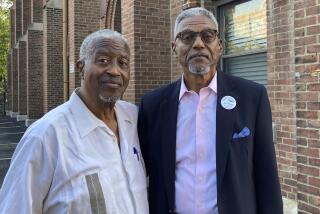Government Radiation Tests
* Gregg Easterbrook, in “The Doomsday Spin” (Opinion, Jan. 9), concludes that “low levels of radiation are far less worrisome than once assumed.” But he is in serious error on essentially every scientific issue he addresses.
He suggests the old saw that a lower cancer rate in high-altitude Denver, with its elevated background radiation dose, may argue for beneficial effects of radiation. This notion has long ago been discredited for its failure to control comparability of cities on causes of cancer other than radiation.
Easterbrook erroneously suggests that Alice Stewart exonerates radiation in Hanford workers by finding that the cancer rate is lower than that for the population at large. Stewart’s major finding is a very large effect of radiation in producing cancer in workers, when one compares Hanford workers getting various doses of radiation.
He describes the dose of injected plutonium in the plutonium experiment as “incredibly tiny.” He is simply mistaken. Dr. Roland Finston’s estimated bone-doses from plutonium in the persons at issue are very large. My own estimates agree with those of Finston. Easterbrook’s comparison of a microcurie with a curie is irrelevant.
The suggestion is made that the Hanford releases of 685,000 curies of radioiodine may have done little harm, in his statement, “Yet it may be that Hanford workers are not especially sick.” But the Hanford estimation of doses and evaluation of health outcomes now being studied by government-sponsored programs have not yet reached any conclusions!
Dr. Rosalyn Yalow’s work on radioimmunoassay is cited by Easterbrook as “the basic test by which radioactive harm to the body is measured.” Dr. Yalow’s excellent work with radioimmunoassay has nothing at all to do with ascertaining radiation’s harm to the body.
Easterbrook tells us that “nuclear-power plants cannot explode but can emit tiny amounts of radiation.” The Chernobyl power plant did have a massive explosion and sent gigantic quantities of radioactive nuclides a mile high into the atmosphere and around the world.
Easterbrook suggests, correctly, that “mammal bodies possess some genetic resistance to radiation.” But he fails to mention that such genetic repair capability produces some misrepair, leaves some injury unrepaired and finds some injury unrepairable.
I have spent over 25 years in criticism of lies and inaccuracies from AEC (Atomic Energy Commission) and DOE (Department of Energy). I believe Energy Secretary Hazel O’Leary. I think her public statements and her actions are indeed admirable. She represents welcome attributes in government: candor, compassion and credibility. I wish her the very best in what appears to be a superb pro-people approach.
JOHN W. GOFMAN MD, Ph.D.
Berkeley
Gofman is a professor emeritus in molecular and cell biology, UC Berkeley, a lecturer emeritus in medicine at UC San Francisco, and was associate director of Lawrence Livermore National Laboratory from 1963 to 1968.






